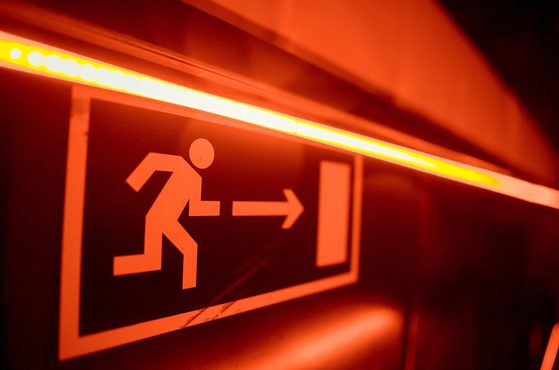New public procurement thresholds for 2026 explained

We explore the new minimum financial thresholds that will apply to public contracts and the application of the Procurement Act 2023 from 1 January 2026.
Read more
We make the difference. Talk to us: 0333 004 4488 | hello@brabners.com
Following the Grenfell disaster, The Building Safety Act 2022 (BSA) was introduced to improve the fire and structural safety of all buildings in the UK — especially those deemed to be higher-risk buildings (those at least 18m in height or with at least seven storeys and containing at least two residential units, with certain exceptions) (HRBs).
As part of this aim — and to create clearer lines of responsibility alongside improved accountability — the BSA and its associated secondary legislation introduce several new roles and duties that apply throughout the design and construction phases of all buildings, with enhanced duties applicable to HRBs. This is known as the new ‘dutyholder regime’.
Part 4 of the BSA also introduces a separate dutyholder regime in relation to the management of occupied HRBs, along with the concept of the ‘Accountable Person’ (AP) and ‘Principal Accountable Person’ (PAP).
Here, Zoe Pond and Charlene Blears provide an overview of the AP and PAP roles, including the assigned duties and responsibilities under the BSA (and applicable secondary legislation), as well as the enforcement powers of the Building Safety Regulator.
Aside from the BSA, the duties and responsibilities of the AP and PAP are implemented through secondary legislation.
The relevant secondary legislation that will be referred to in this article includes:
Throughout this article, there are references to the Building Safety Regulator (BSR). The BSR is a new body that has been created by the Building Safety Act. Part 2 of the BSA establishes the BSR as part of the Health Safety Executive (HSE).
The BSR is a statutory consultee for planning applications that involve HRBs in England. Before planning permission is granted, the BSR checks that the building designs address fire safety. The BSR is also the building control authority for HRBs in England. Building work can’t start until the BSR approves the relevant building control application. In addition, the BSR regulates HRBs, is responsible for overseeing and enforcing the safety standards of all buildings in the UK (particularly higher-risk buildings) and helps professionals in design, construction and building control to improve their competence.
The AP is responsible for building safety risks when a building is occupied.
The term is defined in section 72 of the BSA as any person that owns part of the common parts or has an obligation to repair or maintain (i.e., under a lease) the common parts of an HRB (being those shared by the residents of the building, such as the corridors, staircases, any reception foyer, structure and exterior). In practical terms, this means that an AP could be the freehold owner or a landlord. It also means that it’s possible for the AP to be a property management company that doesn’t hold any legal estate in the HRB but has repairing responsibilities.
The BSA recognises that there will be situations in which more than one AP exists in respect of an HRB. In such situations, each individual AP is responsible for the part of the relevant building in which they have an interest (s.74, BSA and, in particular, Regs. 27 to 28 of the KBI Regulations). For further information on this, please see Regs. 26 to 30 of the KBI Regulations which set out the detail of how to determine who is responsible for parts of a building.
The BSA also recognises that in such situations, there must be a clearly identifiable PAP to ensure a clear allocation of primary responsibility for the overall compliance of the HRB and liaison with the BSR.
It might be worth noting that the role of AP only arises in relation to occupied HRBs and that an HRB is deemed to be ‘occupied’ under section 71(2) of the BSA “where there are residents of more than one residential unit within the building”.
Under section 73(1) of the BSA, where there is more than one AP in respect of a HRB, a PAP isn’t chosen or elected. Instead, responsibility will automatically fall to the organisation or individual that owns or has a legal obligation to repair the structure and exterior of the building. In this way, accountability and liability remain connected to the legal obligation and ability to actually assess and carry out any building safety works required.
Where there is only one AP, that person will automatically become the PAP (s.73(1)(a), BSA).
If there’s uncertainty (or perhaps a disagreement) about who is an AP or PAP, an interested party — which could be anyone who owns or has a repairing obligation for any common part of the HRB — may apply to the First-Tier Tribunal for a decision (s.75(2), BSA).
In respect of the registration of HRBs, under Reg. 15 of the 2023 Regs, where the PAP is an organisation, it’s required to designate an individual within the organisation to be the single point of contact for the purposes of communication. However, the organisation will still be the PAP and remain responsible for compliance with the regime, rather than the designated individual.
According to HSE guidance, the relevant organisation can also name a separate third party — such as a management company — as the single point of contact, but the organisation will remain the PAP. This guidance also suggests that the individual or third party who is designated as the single point of contact for the PAP should have authority or duties relating to the safety of the building.
Although this requirement for a single point of contact arises in relation to the registration of HRBs (as we discuss below, HRBs need to be registered with the BSR prior to occupation), as such registration is a mandatory requirement for all HRBs, it follows that a single point of contact will generally be necessary in cases where the PAP is an organisation.
Another key but separate part of the building safety matrix is the ‘Responsible Person’ (RP). This is a separate role created by the Regulatory Reform (Fire Safety) Order 2005 (the RRO 2005), as amended by the BSA (in particular s.156) and also The Fire Safety (England) Regulations 2022 (the 2022 Regs).
Section 156 of the BSA introduces additional responsibilities for RPs and the 2022 Regs seek to implement many of the recommendations made by the Grenfell Tower Inquiry in its Phase 1 Report, however these specific topics aren’t covered in this article.
Broadly speaking, the RP is the person who has the overall duty for complying with the RRO 2005 — this could be the employer (in relation to a workplace), the person who has control of the premises in connection with carrying on a business (i.e., as a leaseholder, tenant or otherwise) or the freehold owner (s.3, RRO 2005). An RP might therefore also be an AP or even the PAP.
The RP’s role relates to keeping individuals on the premises safe (rather than keeping the building itself safe). Yet, of course, there’s likely to be overlap between its role and that of an AP or PAP.
It’s important to bear in mind that the APs/PAP will need to co-operate with any RP carrying out its duties under the RRO 2005 (s.109(4), BSA). For instance, the APs/PAP would have a duty to provide certain building safety information to the RP (see Reg. 11 of the KPI for further details on the type of information which must be shared).
As outlined above, an AP or PAP is an organisation or person responsible for building safety risks when an HRB is occupied.
A building safety risk is defined as “a risk to the safety of people in or about a building arising from the spread of fire, structural failure or any other prescribed matter” (s.62, BSA).
Under sections 83 and 84 of the BSA, the PAP and all APs are required to assess and “take all reasonable steps” to:
When taking such ‘reasonable steps’, the AP/PAP must act in accordance with ‘prescribed principles’ (s.84(3), BSA) - these are set out in Regulation 4 of the MSR Regs. Those steps may also involve the AP/PAP carrying out works to the building or part of the building for which it’s responsible (s.84(2), BSA).
One of the key aspects of the BSA is its emphasis on record keeping and the management of information during the lifecycle of a building and it also imposes obligations on the AP or PAP in this respect. In particular, the APs/PAPs are required to keep and update ‘prescribed information’ about a building, known as ‘the golden thread’ (s.88, BSA and Reg. 4 of KPI Regs) — a list of what constitutes ‘prescribed information’ is provided in Schedule 1 of the KPI Regs.
Another important duty of an AP/PAP is to ensure that an application is made to the BSR for a Completion Certificate. This certifies that the works carried out comply with all applicable building regulations (see s.76, BSA and Regs. 40-45, HRB Procedures Regs). This must be done upon completion of the works — the stage is known as ‘Gateway 3’ in the building safety regime.
Under s.76(1) of the BSA, a Completion Certificate is required if:
An AP/PAP must ensure that a Completion Certificate has been issued before a ‘relevant residential’ unit becomes occupied (s.76(2), BSA). A Completion Certificate is also needed for the PAP to register a new HRB with the BSR (s.77, BSA and Reg. 10, 2023 Regs).
Although a PAP has the same responsibilities as an AP, it also has a number of additional duties and responsibilities for which it’s solely responsible. A number of these are implemented through secondary legislation (in particular, the 2023 Regs and MSR Regs).
A primary additional duty is the registration of the higher-risk building with the BSR (s. 78, BSA). This responsibility is particularly onerous and the process to be followed by a PAP in registering a HRB is primarily set out in the 2023 Regs.
As well as the duty to initially register the HRB, a PAP also has overall responsibility for ensuring that building safety risks are being managed appropriately. This is reflected in the nature of the other additional duties that come with this role.
Some of the key additional duties and obligations that a PAP has include:
Where there’s a PAP and multiple APs for a building, the BSA puts emphasis on the importance of cooperation. It places a duty on the PAP and APs to cooperate and coordinate with each other (s.109(2), BSA). As mentioned above, they also have a duty to cooperate with those individuals who are Responsible Persons under the RRO 2005 (s.109(4), BSA).
Under section 98 of the BSA, the BSR is given the power to (and obliged to) enforce the duties and responsibilities of the PAP and APs.
For instance, it has been given powers to issue a compliance notice to an AP or PAP where they appear to be in breach of their duties or obligations (s.99, BSR). This notice may require an AP or PAP to take certain steps to remedy or avoid such a breach of duty from occurring.
If the BSR believes that a breach of duty on the part of an AP or PAP has put (or is likely to put) those in or about the building in imminent danger, then it can specify that the compliance notice is an "urgent action notice” (s.99(4), BSA).
If the AP or PAP doesn’t comply with a compliance notice (including an urgent action notice) within the time specified and without a reasonable excuse, it will have committed an offence (s.99(5), BSA) and the BSR could prosecute for the breach.
Where a breach of an AP or PAP’s duties or responsibilities (without reasonable excuse) places one or more people in or about the building at significant risk of death or serious injury, then the AP/PAP will also have committed an offence (s.101, BSA).
The table below summarises some of the penalties that a breach of duty by an AP or PAP may attract:
| Offence | Maximum penalty |
|---|---|
An AP or PAP knowingly or recklessly provides false or misleading information to the BSR (s.24(1), BSA).
| On summary conviction (tried in the Magistrates’ Court):
On conviction on indictment (tried in the Crown Court):
(s.24(3), BSA) |
| An AP or PAP breaches a provision of the building regulations, or a requirement imposed by such (s.39, BSA, which amends s.35 in The Building Act 1984). | As above (s.39, BSA). |
| An AP fails to obtain completion certificate for HRB (s.76(2), BSA). | As above (s.76(4), BSA). |
| A PAP fails to register HRB with the BSR (s.77(1), BSA) — it’s an offence for a higher risk building to be occupied but not registered. | As above (s.77(3), BSA). |
| A PAP fails to apply for a Building Assessment Certificate (s.79(3), BSA) — it’s an offence not to make the application without a ‘reasonable excuse’. | As above (s.79(4), BSA). |
| A PAP fails to display certain prescribed information, such as the Building Assessment Certificate (s.82(3)). | As above (s.82(4), BSA). |
| An AP or PAP fails to comply with mandatory occurrence reporting requirements — i.e., it fails to give prescribed information in prescribed circumstances to the BSR by the prescribed time and in the specified way (s.87(4), BSA). | Unlimited fine (s.87(4), BSA). |
Our construction team can help you to stay compliant with the Building Safety Act.
Talk to us by completing our contact form below.


Loading form...

We explore the new minimum financial thresholds that will apply to public contracts and the application of the Procurement Act 2023 from 1 January 2026.
Read more

Explore the legal and practical implications of the 'pay now, argue later' principle in construction disputes through the landmark case of VMA Services Ltd v Project One London Ltd.
Read more

We reveal how fire consultants and fire authority inspectors approach fire safety compliance and risk management in care homes.
Read more